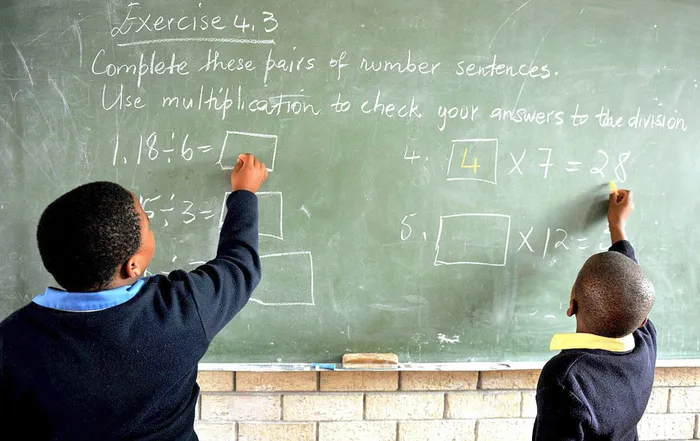The Junior Secondary Schools (JSS) in Kenya face several limitations working under primary school leadership.
Primary school head teachers who don’t belong to JSS may not fully comprehend the JSS curriculum, leading to ineffective management and haphazard implementation.
It’s also unfortunate that P1 teachers who met requisite qualifications to teach in JSS, some with degrees, Masters or even PhDs, in addition to job groups C4 or C5, or even above have been ignored by the systems, their job groups remained the same even after deployment.
Those who were headteachers or even deputies during deployment were only re-designated, headteachers in D1 were given the title of JSS Deputy principal or JSS Senior master so were those in other administrative grades.
Primary school heads may not possess the necessary leadership skills to manage JSS, which requires technical distinct administrative and instructional approaches.
The current primary school heads may prioritize primary school needs over JSS needs, creating conflicts and challenges for JSS teachers and students.
More often than not, JSS teachers have always felt that primary school heads do not give them enough autonomy to make critical decisions, leading to frustration and demotivation.
ALSO READ;
From time to time, differences in teaching styles, curriculum requirements, and administrative approaches have always created tension and conflict between JSS teachers and primary school heads which has eventually led to superiority and inferiority atmosphere
Common sense is certainly clear that primary school heads may allocate resources unevenly, favoring primary school programmes over JSS programes.
The JSS teachers have always felt that their career progression is limited under primary school leadership, leading to dissatisfaction and uncertainty.
To address these critical limitations confided by JSS fraternity and even their primary school counterparts, the government and education stakeholders may consider developing clear guidelines and policies for JSS management and leadership to ensure consistency and effectiveness in all departments including heads of different entities.
Offering training and support for primary school heads and JSS teachers to develop the necessary skills and knowledge to manage JSS effectively and stratify administrative structures can be a step towards a positive direction.
Giving JSS teachers more autonomy to make decisions and take ownership of their programs is very important.
The Ministry of Education and Teachers service Commission have to encourage collaboration between JSS teachers and primary school heads to promote mutual understanding and respect.
ALSO READ;
Kenya, Uganda shares spoils in thrilling FEASSA basketball 3×3 battles in Kakamega
Time is now ripe for appropriate Review of leadership structures to determine whether JSS should have separate leadership or be integrated into existing primary school leadership.
Mixing Junior Secondary School (JSS) and primary school systems has both positive and negative effects. Some potential effects are that primary school heads may struggle to manage JSS students effectively, potentially leading to administrative issues and conflicts, students would respect those teachers handling them effectively in class and would consider all others as strangers
The notable differences in curriculum requirements between primary and JSS levels might cause challenges in implementation and management, this requires its own teachers, “The wearer of the shoe knows where it pinches”.
JSS teachers might find themselves in a delicate position and feel undervalued or unsupported, potentially affecting their morale and job satisfaction.
The mixing of systems by primary school headmasters could impact student learning outcomes, particularly if the leadership and teaching styles are not well-suited for JSS students.
Managing a mixed system might require additional resources, potentially increasing costs. The mixing of systems could lead to unintended environmental consequences, such as increased waste or energy consumption.
Inadequate management of the mixed system might pose health risks to students and staff, for example when ECDE learners intermingle with Junior school students.
It is necessary to develop and communicate clear policies, structures and procedures for managing the mixed system otherwise one of the two systems would immensely suffer.
ALSO READ;
Teachers’ shocker as August salaries slashed in strange deductions
Another vital step is to offer training and support for teachers and administrators to ensure they are equipped to manage the mixed system effectively.
One other step is to encourage collaboration between teachers, administrators, and students to promote a positive and productive learning environment.
By understanding the potential effects and taking steps to mitigate them, educators and administrators can work together to create a successful and effective mixed JSS and primary school system.
The Presidential Working Party on Education Reform in Kenya made several key recommendations regarding Junior School administration.
The party recommended adopting a Comprehensive School system comprising Pre-Primary, Primary school, and Junior School managed as one institution, effectively dropping the term “Secondary” from Junior Secondary and Senior Secondary School.
The party recommended a structure for implementing the Competency-Based Curriculum (CBC) includes a 2-6-2-4-3 system, with Junior Secondary School (JSS) being a 2-year program for 13- to 14-year-olds in Grades 7 and 8.
The party suggested domiciling JSS in existing Primary Schools, citing reasons such as: Learners transitioning to Junior Secondary level were too young for the current secondary school context.
Older students in secondary schools would bully JSS learners due to age gaps. Primary schools can utilize existing structures to mutually support JSS.
The party emphasized the need for systematic pre-service and in-service training for teachers handling CBC classes and recommended that the Teachers Service Commission (TSC) handle recruitment, employment, and staffing for Pre-Primary/ECDE teachers.
Adequate resources and facilities are crucial for the success of CBC, and the Ministry of Education should construct sufficient classrooms and provide necessary resources.
The party suggested retaining summative evaluation by the Kenya National Examination Council (KNEC) at the end of primary school to determine placement into various pathways at the next level.
In conclusion, the TSC and Ministry of Education have to put necessary interventions in place for a win-win situation for both JSS and Primary school.
By Hillary Muhalya
You can also follow our social media pages on Twitter: Education News KE and Facebook: Education News Newspaper for timely updates.
>>> Click here to stay up-to-date with trending regional stories
>>> Click here to read more informed opinions on the country’s education landscape
>>> Click here to stay ahead with the latest national news.






